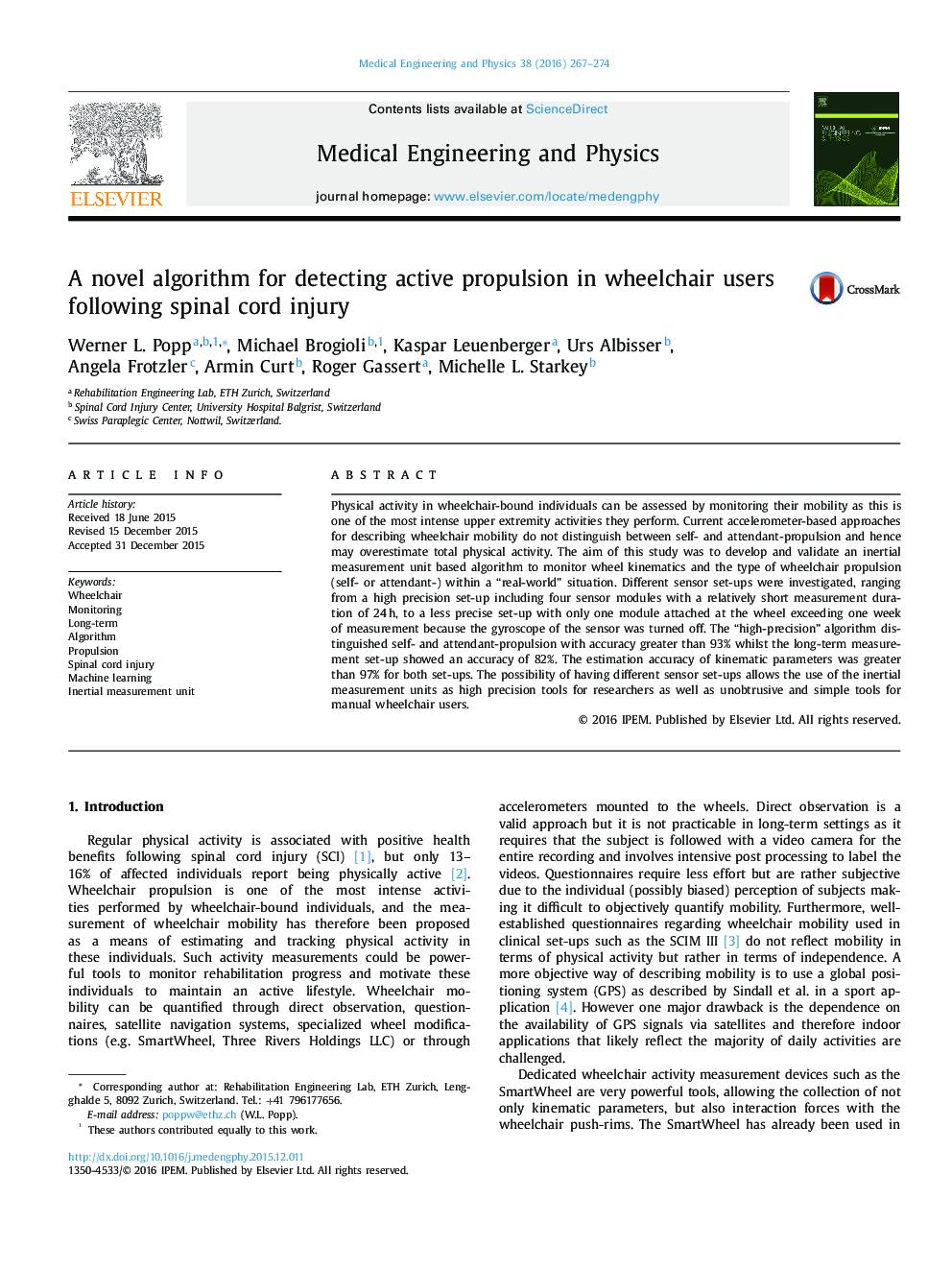| کد مقاله | کد نشریه | سال انتشار | مقاله انگلیسی | نسخه تمام متن |
|---|---|---|---|---|
| 875733 | 910798 | 2016 | 8 صفحه PDF | دانلود رایگان |
• Development of an IMU-based algorithm for long-term wheelchair mobility assessment.
• Validation in “real-world” settings.
• Classification accuracy of up to 93%.
• Accuracy of kinematic parameters such as distance travelled is greater than 97%.
Physical activity in wheelchair-bound individuals can be assessed by monitoring their mobility as this is one of the most intense upper extremity activities they perform. Current accelerometer-based approaches for describing wheelchair mobility do not distinguish between self- and attendant-propulsion and hence may overestimate total physical activity. The aim of this study was to develop and validate an inertial measurement unit based algorithm to monitor wheel kinematics and the type of wheelchair propulsion (self- or attendant-) within a “real-world” situation. Different sensor set-ups were investigated, ranging from a high precision set-up including four sensor modules with a relatively short measurement duration of 24 h, to a less precise set-up with only one module attached at the wheel exceeding one week of measurement because the gyroscope of the sensor was turned off. The “high-precision” algorithm distinguished self- and attendant-propulsion with accuracy greater than 93% whilst the long-term measurement set-up showed an accuracy of 82%. The estimation accuracy of kinematic parameters was greater than 97% for both set-ups. The possibility of having different sensor set-ups allows the use of the inertial measurement units as high precision tools for researchers as well as unobtrusive and simple tools for manual wheelchair users.
Journal: Medical Engineering & Physics - Volume 38, Issue 3, March 2016, Pages 267–274
